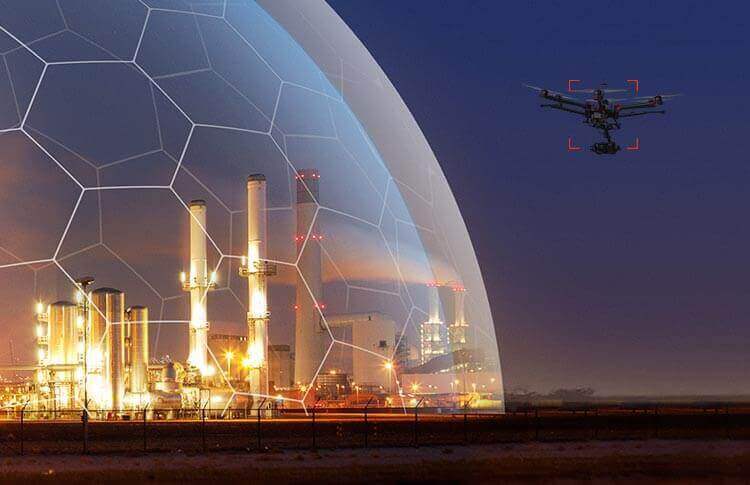Comparison Between the H920+ & QL 1200
The Walkera QL 1200 features a 30x optical zoom, 4K UHD camera capable of recording at 60 frames-per-second, and 16MP stills. The H920+ is equipped with a standard x3 optical zoom, distortion free drone camera and 3-axis gimbal, capable of recording 4K UHD footage at 30 frames-per-second as well as 16MP stills. Unlike the Walkera QL 1200, the H920+ is compatible with a wide variety of high-quality, interchangeable Olympus lenses, including: • 12mm F2.0 Olympus Lens; • 45mm F1.8 Olympus Lens; • 14-42 F3.5-5.6 Olympus Lens. Unlike the H920+, the QL 1200 does not have retracting landing gear, which means it does not provide an unobstructed 360° aerial view. The H920+ offers a state-of-the-art remote control with integrated 7” LCD touch screen. The QL 1200 relies on peripherals (e.g. separate tablet or smart phone) for live/real-time video feed; a mount for tablets is affixed to the remote control. Purchase of the H920’s camera comes with a free handheld modular system, which can be attached to the H920+ for extra steadiness in capturing aerial footage. The QL 1200 is a “Do-It-Yourself” (DIY) drone, which requires some technical knowledge for building and tuning it before sending it up in the sky.

Thoughts on the DJI M210 (RTK) for Inspections & Surveying in the Oil, Gas & Renewable Energy Sector
- Overview of the M-210 Industrial Quadcopter Drone
For those who can justify the investment, DJI’s M-210 series is without a doubt an excellent, first-class commercial-industrial-grade drone to consider for the oil and gas and renewable energy sector. This holds true whether it be for conducting offshore oil asset inspections, oil field surveys, or professional photography and/or filming. Although its price is significantly higher than similarly situated commercial and industrial drones, it nevertheless integrates a variety of unique features not found on other commercial/industrial drones. As discussed in more detail be low, the M-210 unquestionably represents an excellent investment for any person or company involved in conducting industrial-grade inspections and surveying in the energy sector.

- Four Motor Quadcopter Design vs. Six Motor Hexacopter Design
Aside from its price, arguably one of its only (and most obvious) downside is its adoption of a four-motor quadcopter design. While the DJI M210 is still a very powerful, stable, and wind resistant drone, it nevertheless provides less power, stability, steadiness, and wind resistance than it would otherwise have been capable of providing had it adopted a six-motor hexacopter drone design.
- Flight Worthiness
As is commonly the case with commercial/industrial drones, DJI engineers spent some time in ensuring that their product is weather (rain and snow) resistant. For starters, the M210 has an IP43 ingress protection (published by the International Electrotechnical Commission, IP ratings classifies and rates the degree of protection provided against intrusion (dust, fingers and body parts, water, and other accidental contacts). This makes it suitable to fly and navigate in more challenging weather conditions and flight environments, as may be expected, for instance, when managing structural offshore oil/energy assets.
- Intelligent/Autonomous Flight Modes
In terms of intelligent/autonomous flight modes (Point of Interest, Active Track, Obstacle Avoidance, etc.), the M-210 offers nothing unexpected or out of the ordinary for a commercial/industrial drone in the same price range. One of its most notable features in this regard is the integration of front, bottom, and top infrared obstacle avoidance sensors, which make it a more probable and suitable choice for flying in constrained, challenging industrial or commercial environments.
- Foldable Design
The foldable design of the M-210 commercial industrial quadcopter is convenient and innovative, especially for those who intend on travelling to offshore locations with their drone(s). There may be some concern, however, in the ease with which the propeller arms are said to fold, unfold, and snap into place. In contrast to fixed propeller arms, folding propeller arms may, while certainly convenient for traveling, have the effect of introducing undesirable vibrations in the overall structure of the drone’s airframe. However imperceptible the vibration may be, it is present and is affecting flight stability and footage steadiness.
- Unique Feature 1: Dual-Battery System
A unique feature of the M-210 is the fact that it integrates a dual-battery drone system, which makes it perfectly suitable for performing industrial-grade inspections and surveying that require long(er) distances (up to 7 km) and/or extended flight times (approx. 38 minutes – note that flight times vary according to flight conditions and payload type). This extended flight time can, however, be potentially detrimental in that extended flight times means great energy exertion on the drone’s motors. In that sense having a drone that can fly 25-30 minutes on a single battery (e.g. H520), then giving its motors a 5 minutes break while also replacing its battery, can mean a longer lifespan for your drone.
- Unique 2: Payload Configuration & Versatility
Another highly unique and strong point about the M-210 (RTK) is its ability to integrate with a variety of different drone payload configurations: single bottom camera gimbal; single top camera gimbal; or dual bottom camera gimbal. The M-210 RTK offers an extra option: single-top camera gimbal combined with single or dual bottom gimbal. Each gimbal can be mounted with different types of DJI cameras: XT, X4S, X5S, Z30. Any of these last drone cameras can be combined in any off the aforementioned gimbal configurations.
For the purpose of conducting commercial-industrial surveying in the oil and gas and renewable energy sector, DJI recommends its X4S camera gimbal. The XT camera offers thermal imaging capabilities, an attractive option for conducting industrial inspections, for instance, identifying pipeline breaks or leaks. For the purpose of conducting commercial or industrial inspections, the Z30 offers an astonishing 30x zoom capability, allowing it to perform highly scrupulous commercial and industrial inspections. If one were to consider a combination of three (3) imaging solutions for the purpose of conducting commercial-industrial drone inspections and surveys, a combination of the Z30 zoom camera, XT thermal imaging camera, and X4S camera would no doubt offer the most versatile solution.


